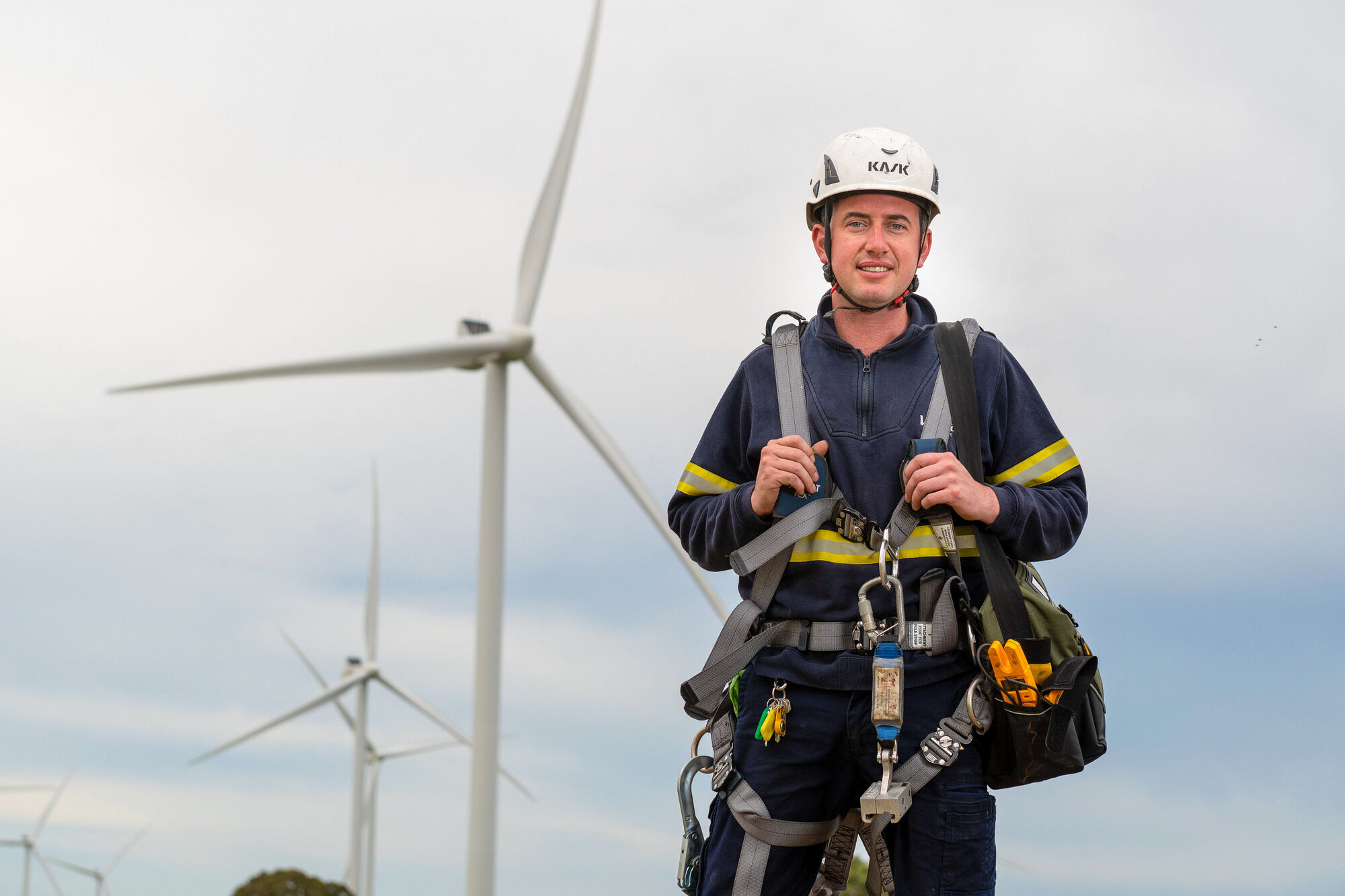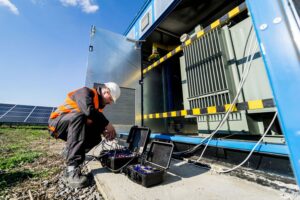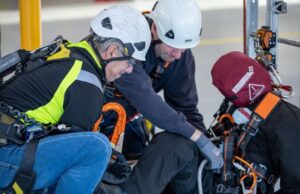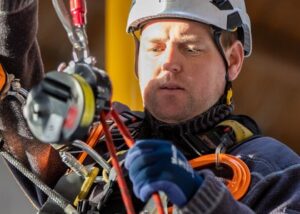Who are the Global Wind Organisation (GWO)?
The Global Wind Organisation (GWO) is a non-profit organization founded by leading companies in the wind energy sector. It focuses on establishing and promoting industry-wide safety and technical training standards to ensure that workers in the wind energy industry are competent, safe, and well-equipped to perform their jobs. The GWO plays a critical role in standardizing training for wind technicians, enabling a global workforce to work in one of the most rapidly growing sectors of renewable energy.
Formation of the GWO
The GWO was formed in 2009 by several of the world’s largest wind turbine manufacturers and operators, including companies like Siemens Gamesa, Vestas, and Ørsted. These industry leaders recognized the need for common safety standards as the wind energy sector expanded rapidly across the globe. With wind energy projects proliferating in different countries, there was a growing demand for a workforce that could operate safely and effectively across various regions and under diverse conditions.
Prior to the establishment of the GWO, wind energy companies often developed their own training programs, which led to inconsistencies in safety practices. This fragmentation created potential safety risks and inefficiencies. By forming a unified organization, these companies aimed to create a set of universal training standards that could be adopted globally, ensuring that wind technicians would have the same foundational skills and knowledge regardless of where they were trained or employed.
Purpose of the GWO
The primary purpose of the GWO is to improve safety standards within the wind energy industry. Wind turbines operate in challenging environments, such as offshore installations or in remote onshore locations, where technicians are exposed to unique risks, including working at significant heights, dealing with electrical hazards, and performing maintenance in extreme weather conditions. To address these risks, the GWO has developed standardized training modules that cover essential safety practices.
The GWO’s training standards are designed to reduce the risk of accidents and injuries by ensuring that technicians are properly trained in key safety areas. The most common GWO training modules include:
- Working at Heights: Training on the safe use of fall protection equipment and techniques for working on tall wind turbines.
- Manual Handling: Best practices for lifting, moving, and handling heavy or awkward loads to prevent musculoskeletal injuries.
- Fire Awareness: Training on fire prevention, identifying fire hazards, and responding to fire incidents in turbine environments.
- First Aid: Basic first aid skills to ensure that technicians can provide immediate care in case of injury on the job.
- Sea Survival (for offshore workers): Training for technicians working in offshore wind farms, covering emergency situations at sea, evacuation techniques, and survival skills.
These modules form the basis of the Basic Safety Training (BST) and Basic Technical Training (BTT) courses, which are required for wind technicians working for companies that adhere to GWO standards. As the wind industry grows, these courses are continually updated to reflect new technologies and best practices.
The GWO Yearly Awards
To recognize excellence in the wind energy sector, the GWO hosts annual awards that highlight achievements in areas such as safety performance, innovation, and workforce development. The GWO Yearly Awards are presented to companies, training providers, and individuals who have demonstrated outstanding contributions to advancing safety standards in the wind industry.
The awards cover several key areas:
Safety Performance: This category rewards organizations that have demonstrated exceptional commitment to improving safety across their operations. Companies that achieve significant reductions in workplace injuries, accidents, or incidents are recognized for their proactive efforts in fostering a safer working environment.
Training Excellence: GWO-accredited training providers that have delivered outstanding training programs and significantly contributed to the skill development of wind technicians are recognized in this category. The award highlights those who have gone above and beyond in delivering high-quality, innovative, and impactful training.
Innovation in Safety Training: This award is given to companies or individuals who have introduced innovative approaches to safety training, such as the use of new technologies, digital platforms, or advanced teaching methodologies to improve the learning experience for wind technicians.
Workforce Development: This category focuses on efforts to expand and diversify the wind energy workforce. Companies or organizations that have successfully recruited, trained, and retained talent from diverse backgrounds, or that have made significant investments in employee development, are celebrated for their contributions.
Sustainability Efforts: The GWO also acknowledges companies that prioritize sustainability in their operations, especially those that align their safety training and workforce practices with broader environmental goals. This category honors those who integrate safety with a commitment to reducing the environmental impact of wind energy projects.
GWO accreditation provides a critical foundation in safety and basic technical skills, it must be complemented by additional training, experience, certifications, and compliance with local regulations and company-specific requirements to fully prepare individuals for the comprehensive demands of working on wind turbines.
Here’s STL USA’s Training Manager, Brandon McKelvain’s view on the current landscape around GWO accreditations –
“The strength of the GWO accreditations is in basic safety and rescue training. The standards are laid out in a simple consistent method. The Taxonomy Framework is excellent for developing content and courses. The “generic approach” found in GWO standards is very effective for introducing participants to a verity of PPE and rescue kits.
However, the depth of basic technical is insufficient and the certification being enduring presents a problem for improvements. More advanced technical knowledge, skills, and abilities are essential for wind technicians before entering the field and unfortunately this isn’t happening.
In addition to GWO accreditations, I think the ACP’s Micro Credentials are an excellent step in the right direction. We’ve made it a point to start integrating these into our training courses. In doing so, technicians know how to apply their skills, which is essential for technicians.”
Interested in learning more?
If you are interested in any of the GWO courses that STL USA run, or in training to become and accredited GWO instructor, click the button to get in touch.




